Dealing with a car door that has a broken handle can be a frustrating experience, especially when you’re trying to access your vehicle from the outside.
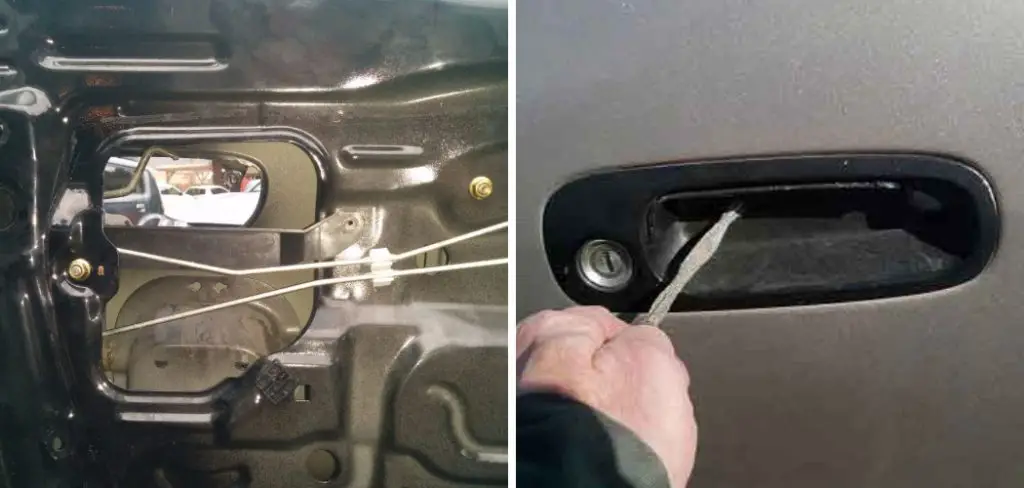
Whether the handle has snapped off completely or is simply not functioning, knowing how to open your car door without it is an essential skill that can save you time and hassle.
This guide will provide you with practical, step-by-step instructions on how to open car door with broken handle from outside, ensuring you can regain access to your vehicle quickly and safely.
We’ll explore various methods, including using a slim jim, leveraging the internal mechanisms, and alternative tools that can help you in this predicament.
Additionally, we will discuss important safety considerations and tips to prevent further damage to your vehicle. By following these expert guidelines, you can handle this common issue with confidence and efficiency, minimizing disruption to your day.
The Inconvenience and Frustration
Dealing with a broken car door handle from the outside often leads to significant inconvenience and frustration.
This situation can make even the simplest task of entering your car feel like an insurmountable obstacle, especially if you’re in a hurry or need to access something important inside your vehicle.
The added stress of potentially causing further damage or the anxiety of being locked out entirely only compounds the problem.
Moreover, this issue can disrupt your daily schedule, forcing you to find alternative transportation or leave your car unsecured.
Understanding how to manage this frustration effectively and having a contingency plan can greatly alleviate the associated stress and streamline your efforts to regain access to your vehicle.
Common Causes of a Broken Exterior Handle
Understanding the common causes of a broken exterior car door handle can help you prevent this issue in the future or identify underlying problems that may need attention.
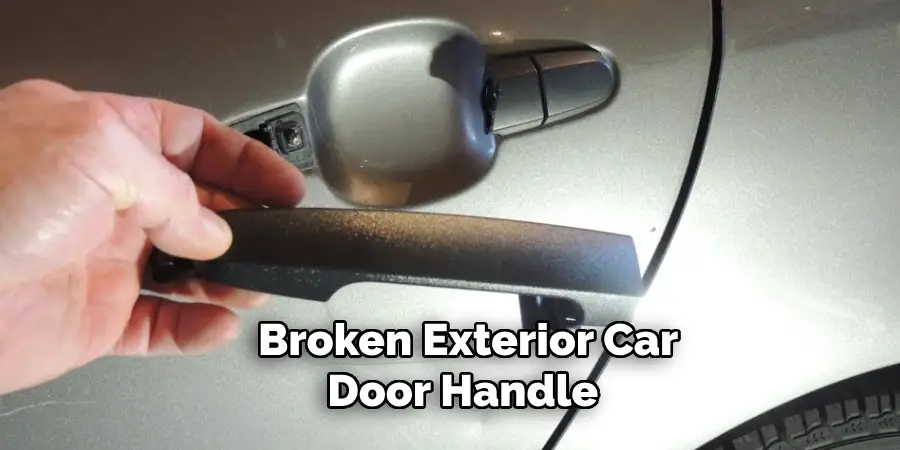
One prevalent cause is wear and tear over time. Repeated use of the handle, especially in harsh weather conditions, can lead to material fatigue, making it more susceptible to breaking.
Another frequent cause is the accumulation of dirt, grime, or rust within the handle mechanism, which can hinder its functionality and eventually lead to a break. Additionally, inadvertently applying excessive force to the handle, such as pulling too hard when it’s frozen shut, can easily cause it to snap.
Furthermore, manufacturing defects or poor-quality materials used in the handle’s construction can result in premature failure. Lastly, accidental impacts or collisions with objects can cause immediate damage to your car door handle, leaving it non-functional.
By being aware of these common causes, you can take proactive steps to maintain your car door handles and address issues promptly to avoid inconvenient breaks.
Assessing the Situation
Before attempting to open a car door with a broken handle from the outside, it’s crucial to conduct a proper assessment of the situation.
First, determine the extent of the damage to the handle. Is it completely broken off, or does it still have some functionality? Inspect the mechanism for any visible obstructions like dirt or debris that might be contributing to its malfunction.

Pay attention to the weather conditions as well; extreme cold can make the task more challenging and potentially cause further damage to your vehicle.
Assess whether you have any tools available, such as a slim jim, a wire coat hanger, or even basic hand tools, that could assist you in accessing the door’s internal mechanisms.
Additionally, consider your location and safety; if you’re in a precarious or unsafe environment, it’s essential to prioritize your safety and possibly seek professional help.
By thoroughly assessing the situation, you can choose the most appropriate and effective method for regaining access to your vehicle while mitigating the risk of additional damage or injury.
Inspecting The Door
Once you have assessed the overall situation, the next step is to carefully inspect the door itself. Begin by examining the broken handle to understand how it connects to the door’s internal latch mechanism. Look for any remnants of the handle that might still be attached, as these pieces can offer clues on how to proceed.
Check for visible screws or bolts that could be loosened to facilitate accessing the internal components. Additionally, take note of any scratches, dents, or signs of damage around the handle area which might indicate previous attempts to force the door open.
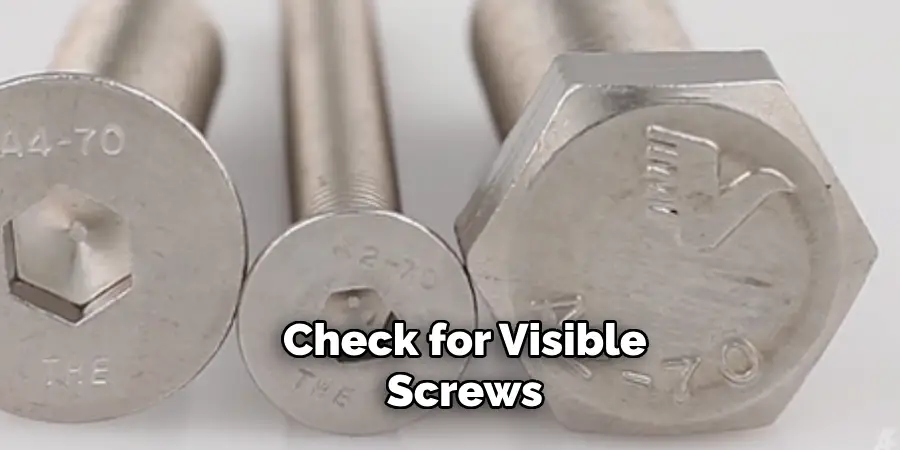
Next, move to the door’s edges and inspect the seams for any gaps that might provide a point of entry for a tool like a slim jim. Observe the weather stripping around the door for any areas that have been compromised or might be easily moved aside to allow tool access.
Verify the status of other door locks and mechanisms to ensure they are not contributing to the problem—sometimes a faulty central locking system can exacerbate issues with a single handle.
If your car is equipped with manual locks, see if manipulating the lock manually from the outside yields any results.
For vehicles with electronic locks, ensure that the car battery is not dead, as this could impact your ability to unlock the door electronically. Documenting all these observations systematically can guide your next steps and help you determine the most effective method to regain entry without causing further damage.
Assessing the Accessibility of Alternative Entry Points
In situations where the primary door handle is broken, evaluating alternative entry points can be a crucial step in regaining access to your vehicle.
Begin by inspecting the other doors of your car to determine if they can be opened from the outside. Sometimes, a secondary door may not have the same mechanical issue and can be used to get inside the vehicle.
If these doors remain locked and your car is equipped with central locking, consider using the key fob to unlock them or the manual key if digital solutions fail.
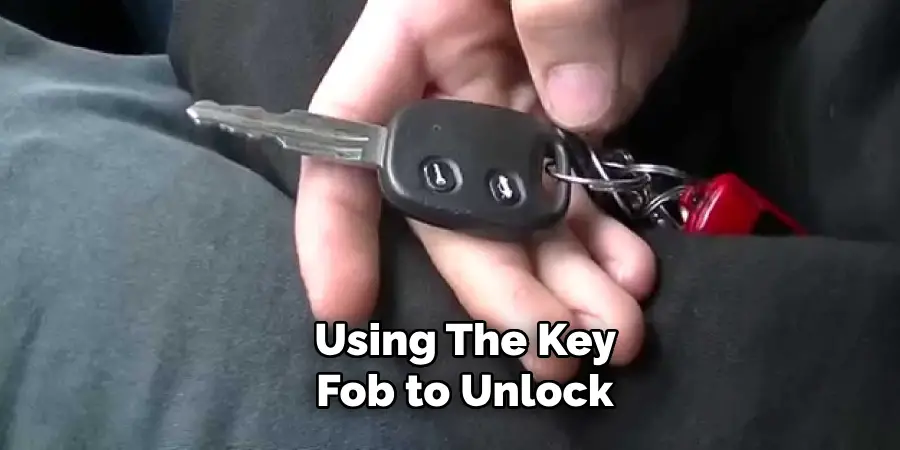
Additionally, check for the accessibility of the vehicle’s trunk. In many car models, the trunk has a release mechanism that might bypass the malfunctioning door locks.
Once inside the trunk, you may be able to fold down the rear seats, providing a pathway into the main cabin. Make sure to avoid causing any damage to the seats or locking mechanism during this process.
For vehicles with sunroofs, an open or easily accessible sunroof can serve as another entry point. Carefully analyze whether the sunroof can be opened without specialized tools or causing damage.
As a last resort, consider accessing the car through the windows if they are slightly open. Using tools like a coat hanger or a slim jim, you might be able to unlock the door from the inside.
By systematically evaluating all potential access points, you can identify the safest and most efficient way to enter your vehicle, ensuring that you cause minimal additional damage and avoid escalating the issue.
10 Methods How to Open Car Door with Broken Handle from outside
Method 1: Using a Slim Jim
A slim jim is a specialized tool designed to unlock car doors by manipulating the internal locking mechanisms. To use a slim jim, first, ensure that you have a proper understanding of your car’s lock mechanism.

Slide the slim jim between the window and the weather stripping on the door. Carefully maneuver the tool until you feel it catch on the control rod of the lock. Once engaged, gently lift the slim jim to unlock the door. This method requires precision and patience, as improper use can damage the internal components of the door.
Method 2: Utilizing a Coat Hanger
A coat hanger can serve as an improvised tool for unlocking a car door. Straighten a wire coat hanger, leaving a small hook at the end. Slide the hanger between the window and the weather stripping, similar to using a slim jim. Maneuver the hook to catch the lock control rod and pull up to unlock the door.
This method may require several attempts and adjustments to position the hanger correctly. Be cautious to avoid scratching the window or damaging the weather stripping.
Method 3: Employing a Wedge and Rod
Using a wedge and rod is a common method for unlocking car doors. Insert a small wedge, such as a rubber or plastic doorstop, between the top edge of the door and the car frame to create a small gap. Insert a long, thin rod or a sturdy wire through the gap and use it to push or pull the lock button inside the car.
This method is effective for cars with power locks or manual buttons that can be easily accessed. Ensure you use gentle pressure with the wedge to avoid damaging the door or window.
Method 4: Accessing the Lock Mechanism
If the external handle is broken but the internal locking mechanism is accessible, you can try to manipulate the lock directly. Remove any coverings or panels on the outside of the door if possible. Locate the internal locking mechanism and use a screwdriver or similar tool to manually unlock the door.
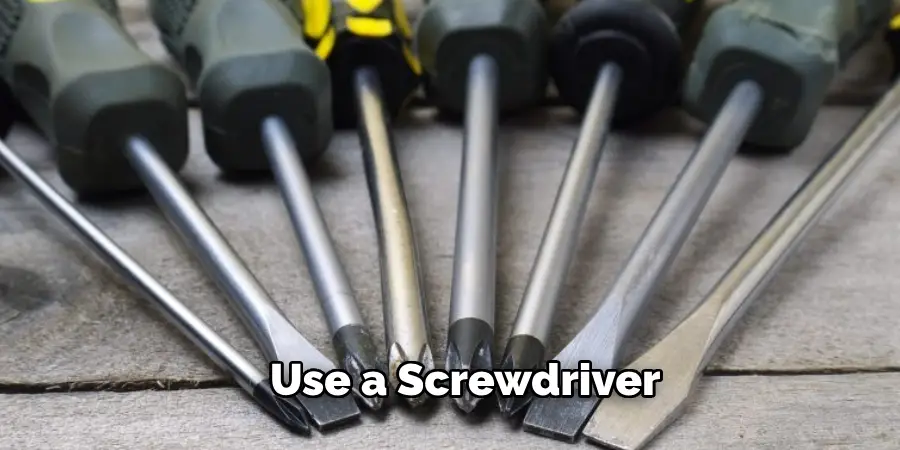
This method requires a clear understanding of your car’s door mechanism and may involve some trial and error. Exercise caution to avoid damaging the lock or other components.
Method 5: Using a Keyless Entry System
Many modern cars come equipped with keyless entry systems or remote key fobs. If your car has this feature and the handle is broken, you can use the remote to unlock the doors.
Ensure the key fob battery is functioning correctly and that you are within range of the vehicle. If the key fob is not working, try replacing the battery. Additionally, check your car’s manual for any emergency key access methods that might be available for such situations.
Method 6: Calling a Locksmith
When other methods fail, calling a professional locksmith is a reliable option. Locksmiths have the tools and expertise to unlock car doors without causing damage.
They can often respond quickly and have specialized tools to handle various types of locks and car models. While this service may come at a cost, it is a dependable solution, especially in urgent situations where other methods are impractical or unsuccessful.
Method 7: Using a Tennis Ball

The tennis ball method is a more unconventional approach that has gained popularity online. The idea is to create a small hole in a tennis ball, place the hole over the car’s lock, and press firmly to create air pressure that can unlock the door.
While this method is largely anecdotal and its effectiveness is debated, it may work on certain older car models with simpler locking mechanisms. It is worth trying if you have a tennis ball available and other methods have not succeeded.
Method 8: Accessing Through the Trunk
In some cases, you can access the car interior through the trunk. If the trunk is not locked and the rear seats fold down, you can crawl through the trunk and open the car door from the inside.
This method is useful if the external handle is broken and you cannot use other tools to unlock the door. Be prepared for a bit of maneuvering and ensure you have enough space to move through the trunk safely.
Method 9: Using a Lockout Tool Kit
Lockout tool kits, often used by professional locksmiths and emergency responders, contain a variety of tools designed to unlock car doors.
These kits typically include wedges, rods, and slim jims. If you have access to such a kit, follow the included instructions to unlock your car.
Using a lockout tool kit can be highly effective, but it requires familiarity with the tools and the car’s locking mechanism. Investing in such a kit can be useful if you frequently encounter lockout situations.
Method 10: Contacting Roadside Assistance
Many insurance policies and car manufacturers offer roadside assistance services that include lockout help. If you have such coverage, contacting your provider can be an efficient way to get your car unlocked. Roadside assistance professionals have the tools and experience to unlock your car safely.
Additionally, this service is often included in your policy at no extra cost, making it a convenient and reliable option.
Things to Consider When Opening a Car Door with a Broken Handle
- Type of Lock Mechanism: Understanding the type of lock mechanism your car uses is crucial. Different cars have varying internal mechanisms that may require specific tools or methods. Always research or refer to your car’s manual for insights into the locking system.
- Potential Damage: Be aware that attempting to unlock a car door with improvised tools can cause damage to the vehicle. Improper use of tools like coat hangers, slim jims, or wedges can scratch the paint, break windows, or damage weather stripping. Exercise caution, patience, and precision.
- Tool Availability: Consider what tools you have on hand. Not every method may be suitable, depending on the tools available to you. If you lack the necessary tools, it may be better to call a professional locksmith or roadside assistance.
- Skill Level: Assess your own skill level and comfort with handling car mechanisms and tools. Some methods require a high degree of dexterity and familiarity with car locks. If you are unsure or inexperienced, seeking professional help may prevent further complications.
- Emergency Situations: If the situation is urgent, such as a child or pet being locked inside, speed and safety are paramount. In such cases, do not hesitate to contact emergency services or a professional locksmith to ensure quick and safe access.
- Legal Considerations: Always ensure you have the legal right to unlock the car, especially if it is not your own vehicle. Unauthorized entry into a car can result in legal consequences. Make sure you have permission or can prove ownership.
- Backup Plans: Always have a backup plan in case your initial method fails. This could involve having the contact information of a reliable locksmith, keeping spare keys in accessible locations, or enrolling in a roadside assistance program.
- Professional Help: Remember that professional locksmiths have the expertise and specialized tools to unlock car doors with minimal damage. If you have any reservations about performing the task yourself, calling a locksmith is a sensible and often cost-effective alternative.
Conclusion
Opening a car door with a broken handle from the outside involves a variety of methods, each with its own set of tools and techniques. Whether you use a slim jim, a coat hanger, a wedge and rod, or other improvised tools, the key is to approach the task with patience and care to avoid damaging your car.
Professional help from locksmiths or roadside assistance can provide reliable solutions when other methods fail. By understanding and utilizing these ten methods, you can effectively manage the challenge of a broken car door handle and regain access to your vehicle safely.
Hopefully, this article gave you some helpful tips about how to open car door with broken handle from outside successfully, so now that you have the proper knowledge on how to get the job done, why not give it a try today?
